The black poplar or velvet pioppino mushroom is a nutty tasting fungi with elegantly long, chewy stems. Although they can be hard to find, they've started to gain some popularity as a boutique mushroom in the U.S. and are worth seeking out. In this post we'll look at their background, why they're hard to find, and a few ways to use them in the kitchen.
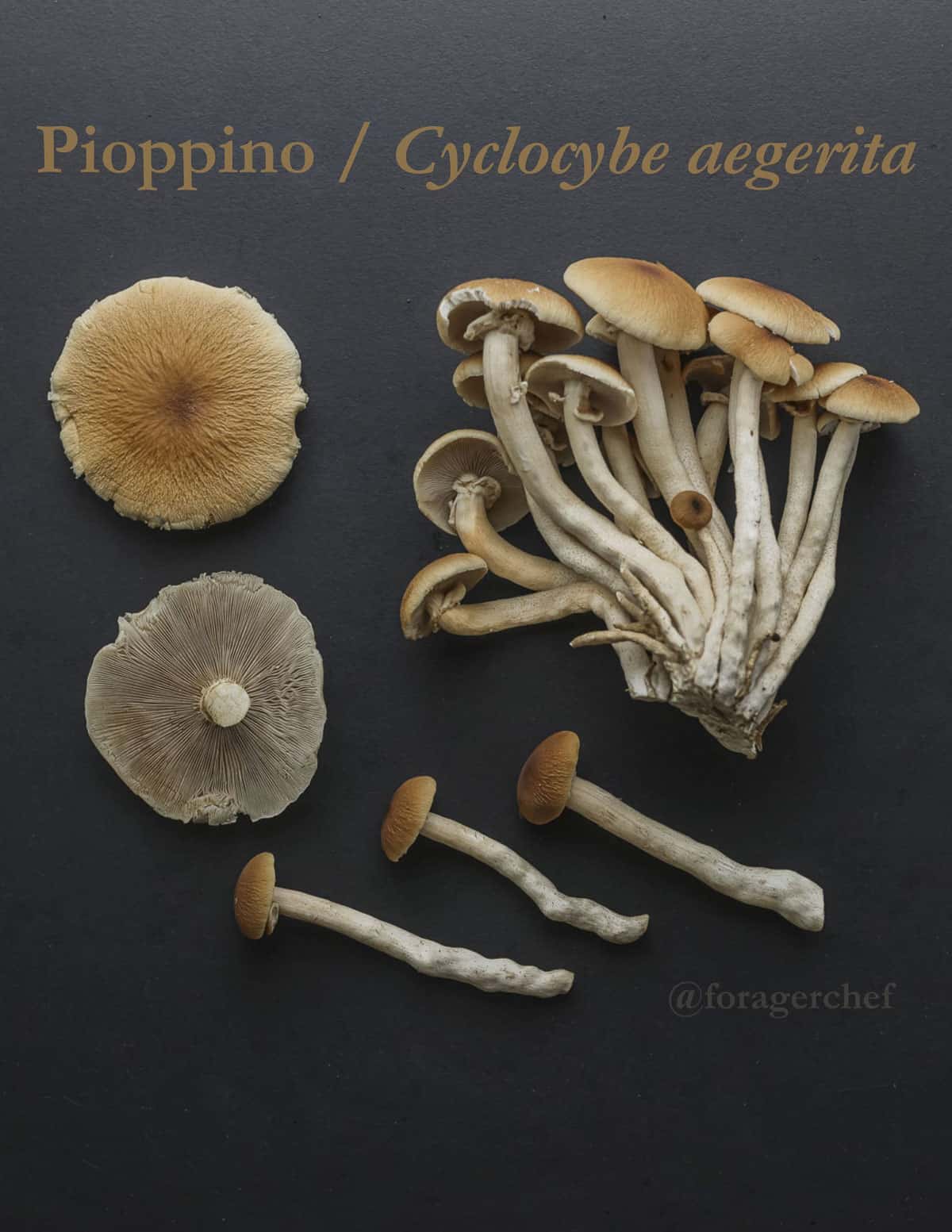
These are also known as the poplar field cap, velvet pioppini mushroom and sword belt Agrocybe. They've been foraged in Southern Europe for a very long time, with Italians being particularly fond of them.
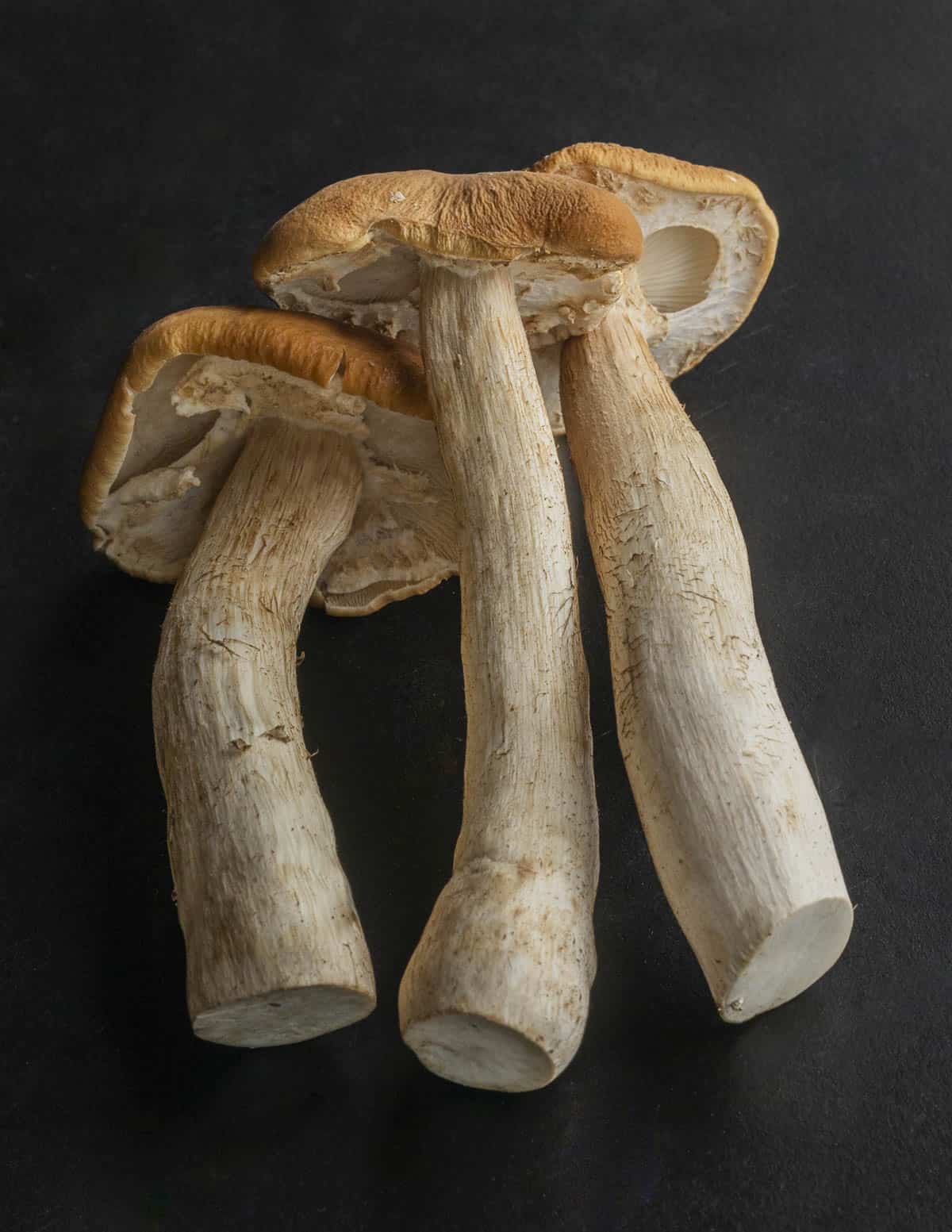
Although mostly known as an Italian mushroom they're also native to Asia. In China they're known as the tea tree mushroom. In Japan it's known as yanagi matsutake (translating roughly to "willow mushroom" as they may grow near willows). Besides that, they have a number of outdated, confusing synonyms including:
- Agrocybe aegerita
- Pholiota aegerita
- Agrocybe cylindrica
Although I've heard rumors of people harvesting wild C. aegerita in the American South, I've never seen anyone harvest them myself and the vast majority of piopinni eaten in North America are cultivated.
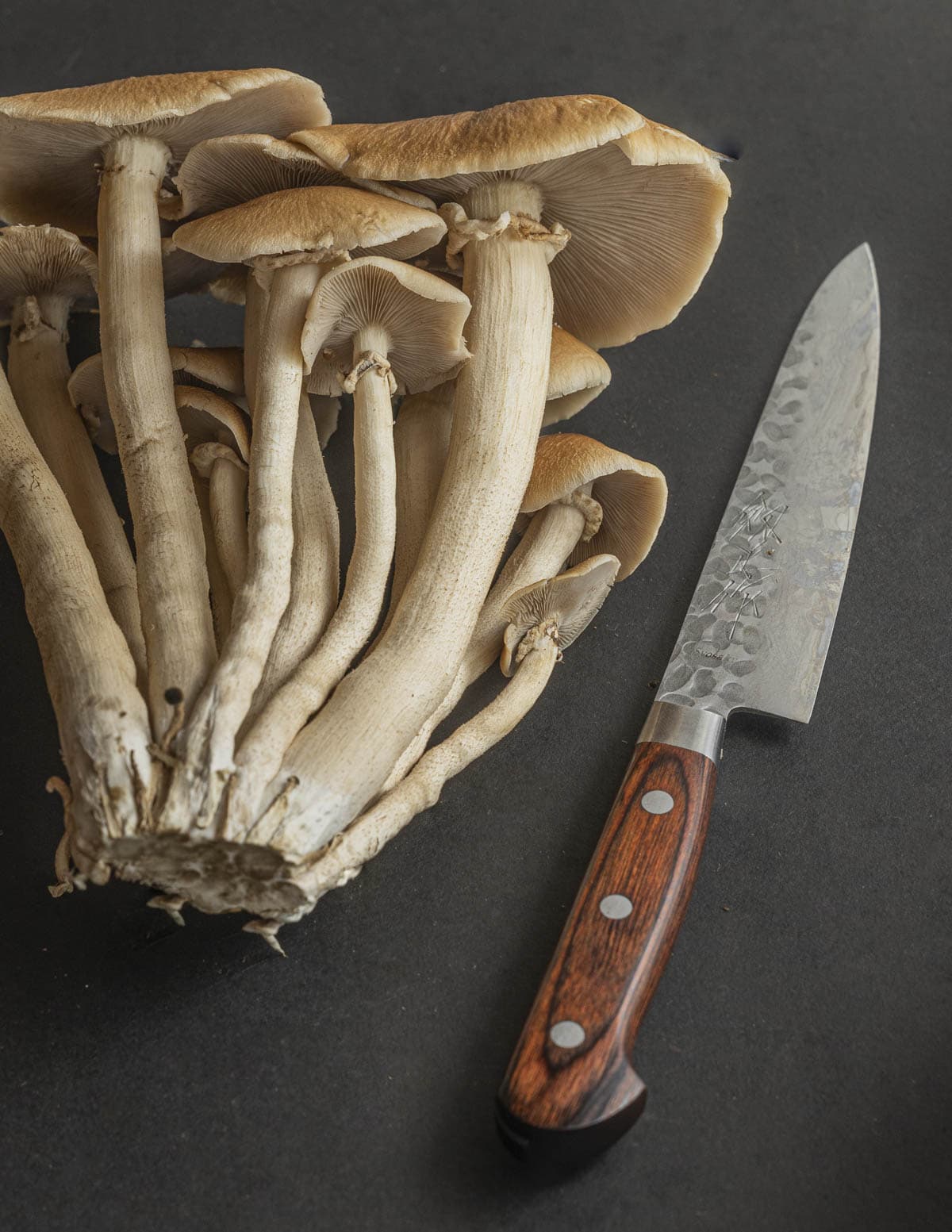
But, for the experienced mushroom hunter there's a few related edible species that grow wild in North America. Agrocybe aericola, known as the maple Agrocybe is described in the Audobon Society Field Guide to Wild Mushoroms.
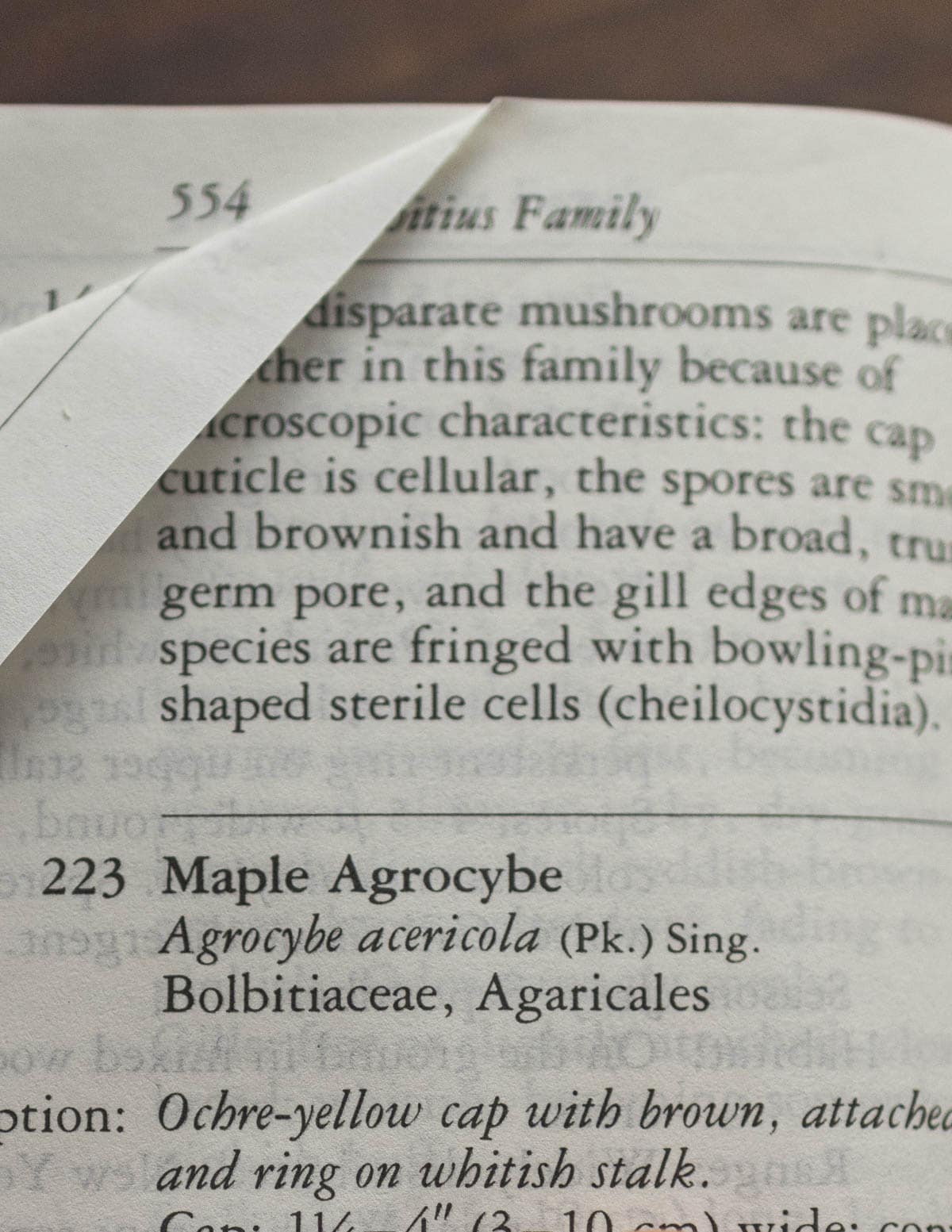
Agrocybe praecox, a wood-chip loving decomposer often seen in landscaping is another, although I've never seen them in a quantity worth harvesting. None of the related mushrooms mentioned here are ones I'd recommend for beginning foragers as they can be tricky to identify.
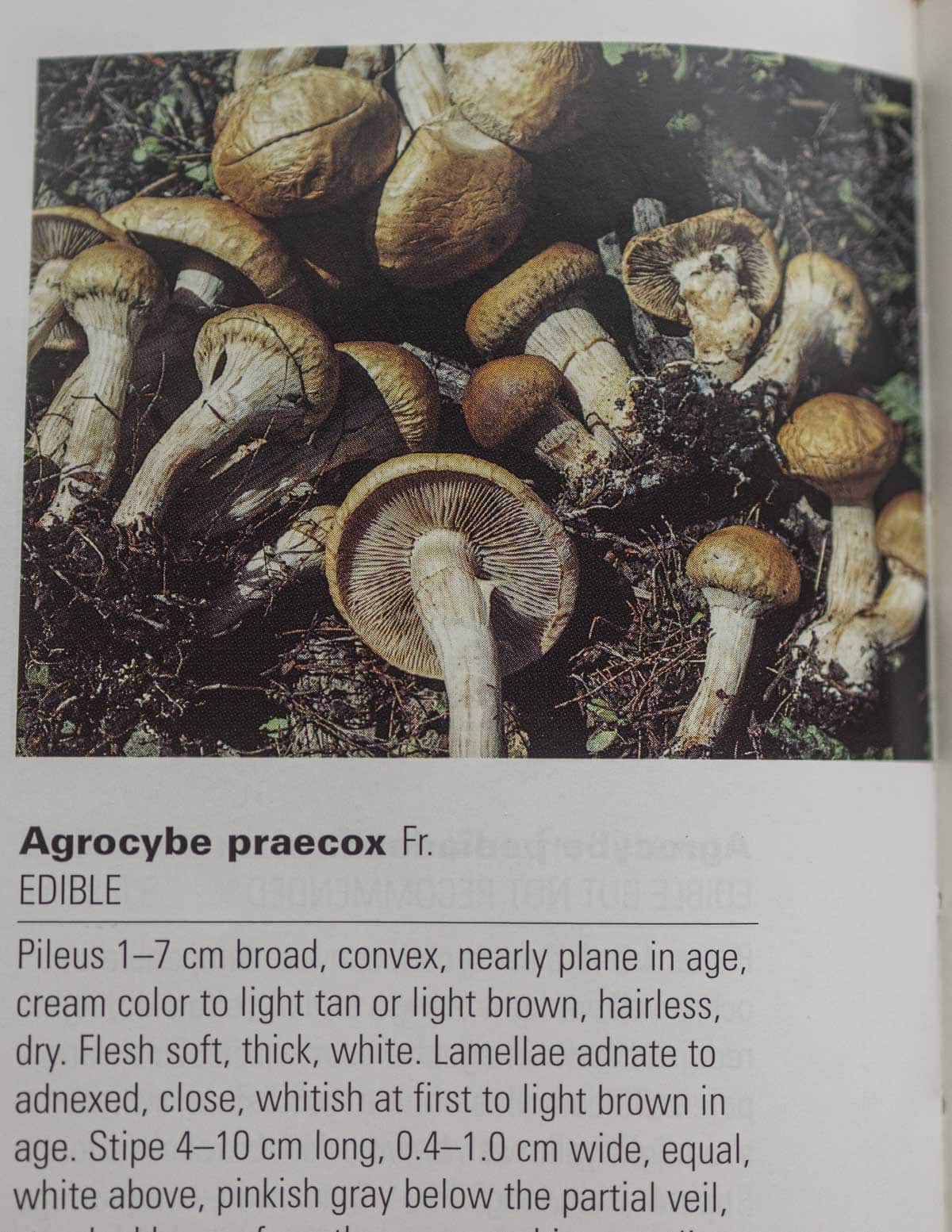
Growing Pioppino Mushrooms
The expertise needed to identify the wild mushrooms is one of the reasons the cultivated ones can be fun. Cultivated varieties can allow you to taste a species that's difficult to identify or find in the wild.
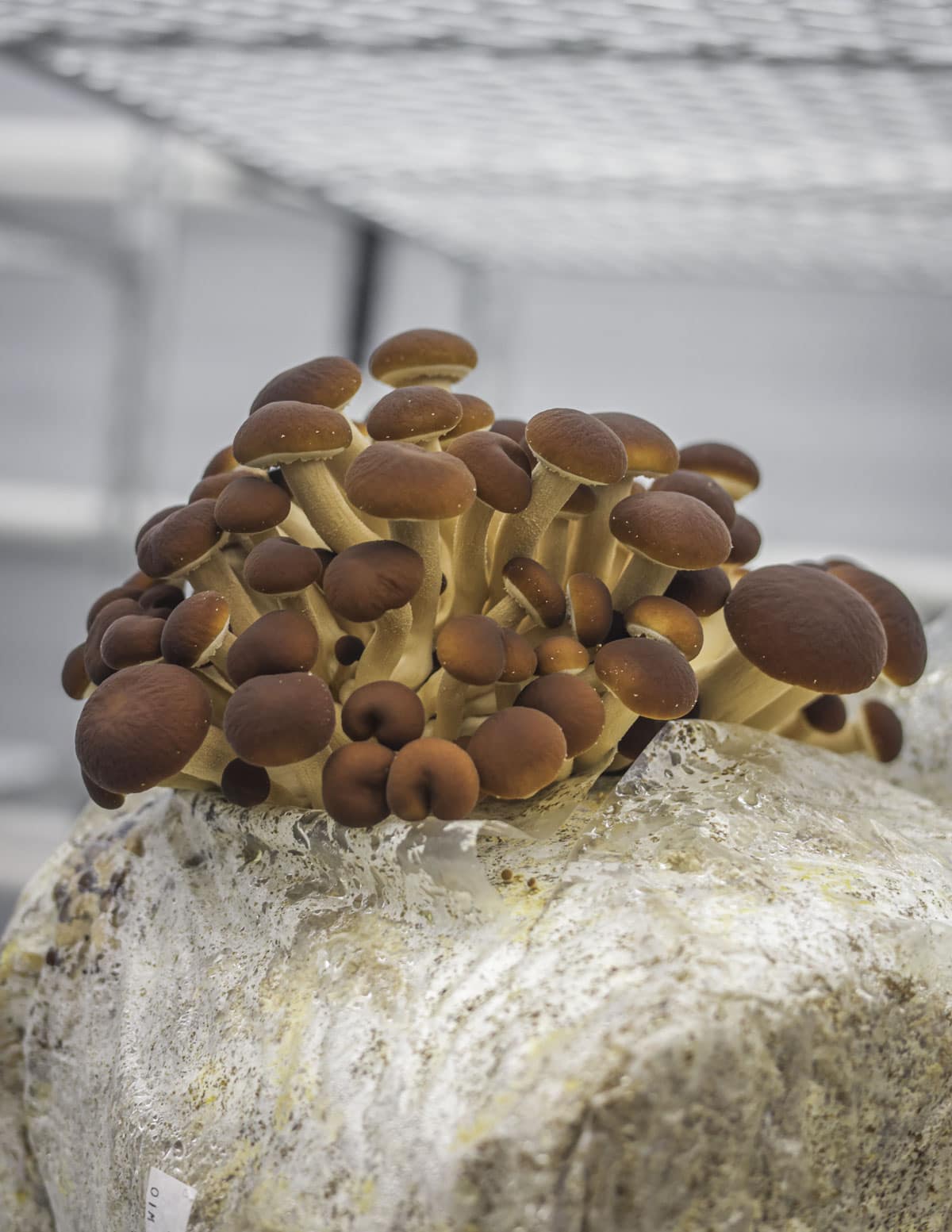
Unlike, say, oyster mushrooms, cultivating pioppino mushrooms isn't as easy as other fungi. As I'm not an expert on growing mushrooms I spoke with my friends at R and R Cultivation in New Hope MN about them.
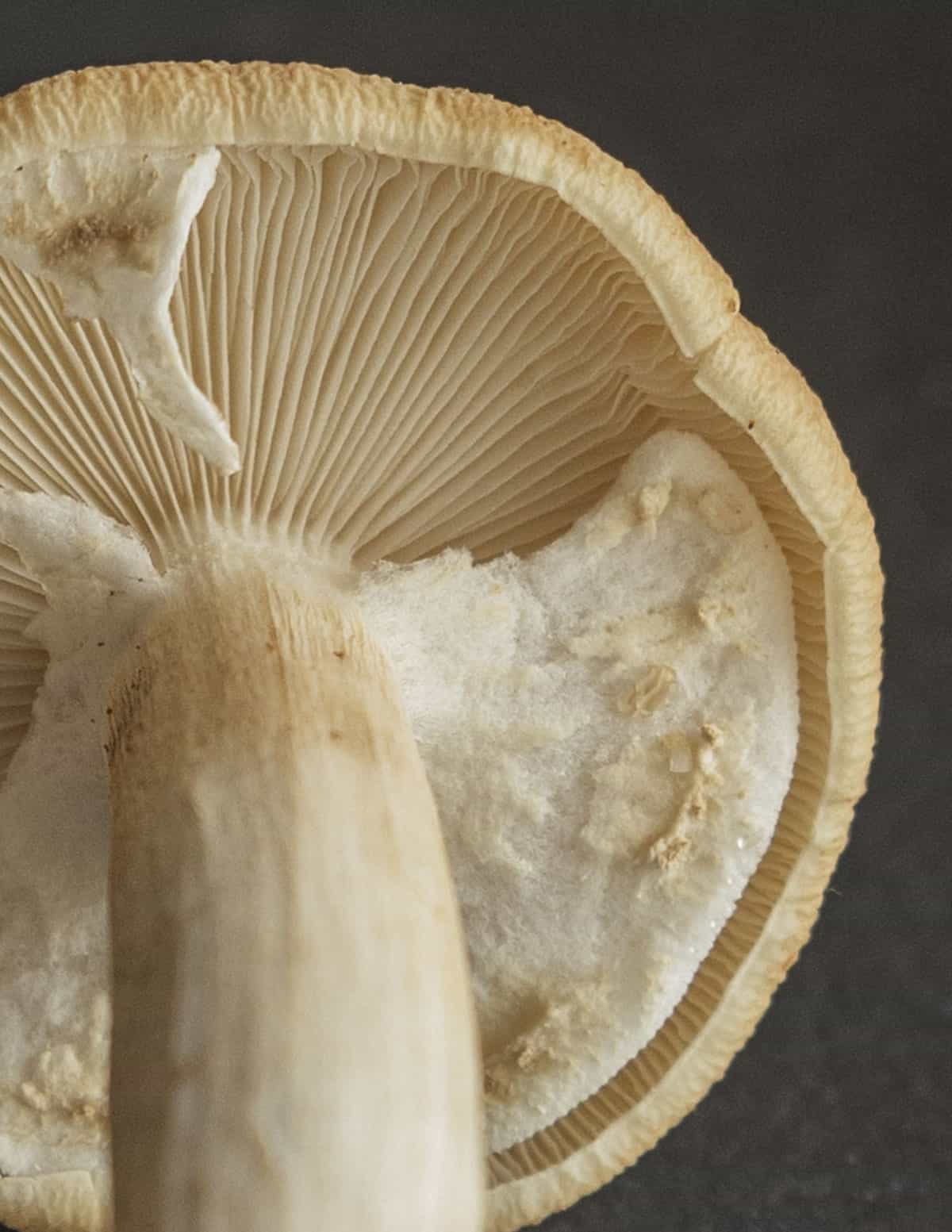
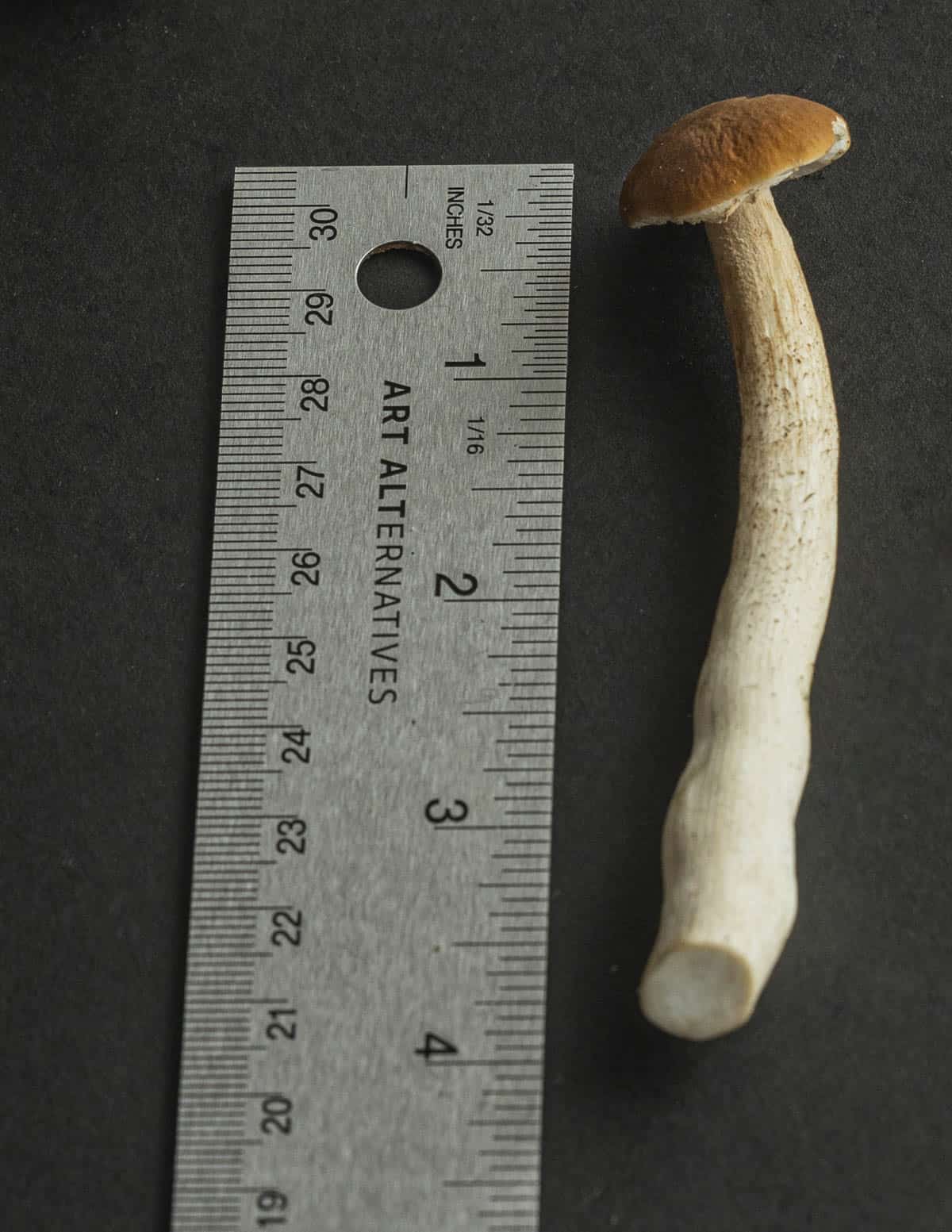
They were also nice enough to donate the 10 lbs of mushrooms I cooked through for this article. Besides growing a whopping 8000 lbs of mushrooms a week, they have a great mushroom CSA that delivers around the Twin Cities if you're interested.

According to my friend Joe from R and R, one of the reasons pioppino mushrooms haven't caught on commercially is the relatively low yield. They also require more space and carbon dioxide, as well as consistent temperature and humidity controls. Low yield translates to higher prices, and I've seen 4 oz clamshells of pioppino mushrooms priced at $15.99 at my local coop.
Cooking Pioppino Mushrooms
You can cook pioppinos in just about any of your favorite mushroom recipes. Depending on what you want to do there's a few ways they can be prepared. As most of the mushrooms will be cultivated, the first step is trimming any remaining woody substrate from the base so you have singular mushrooms.

The age of the mushrooms is important too. Compared to chestnut mushrooms, pioppini I've cooked are frail and brittle after the mushrooms have matured and the caps have opened, meaning the best ones will be young, firm mushrooms.
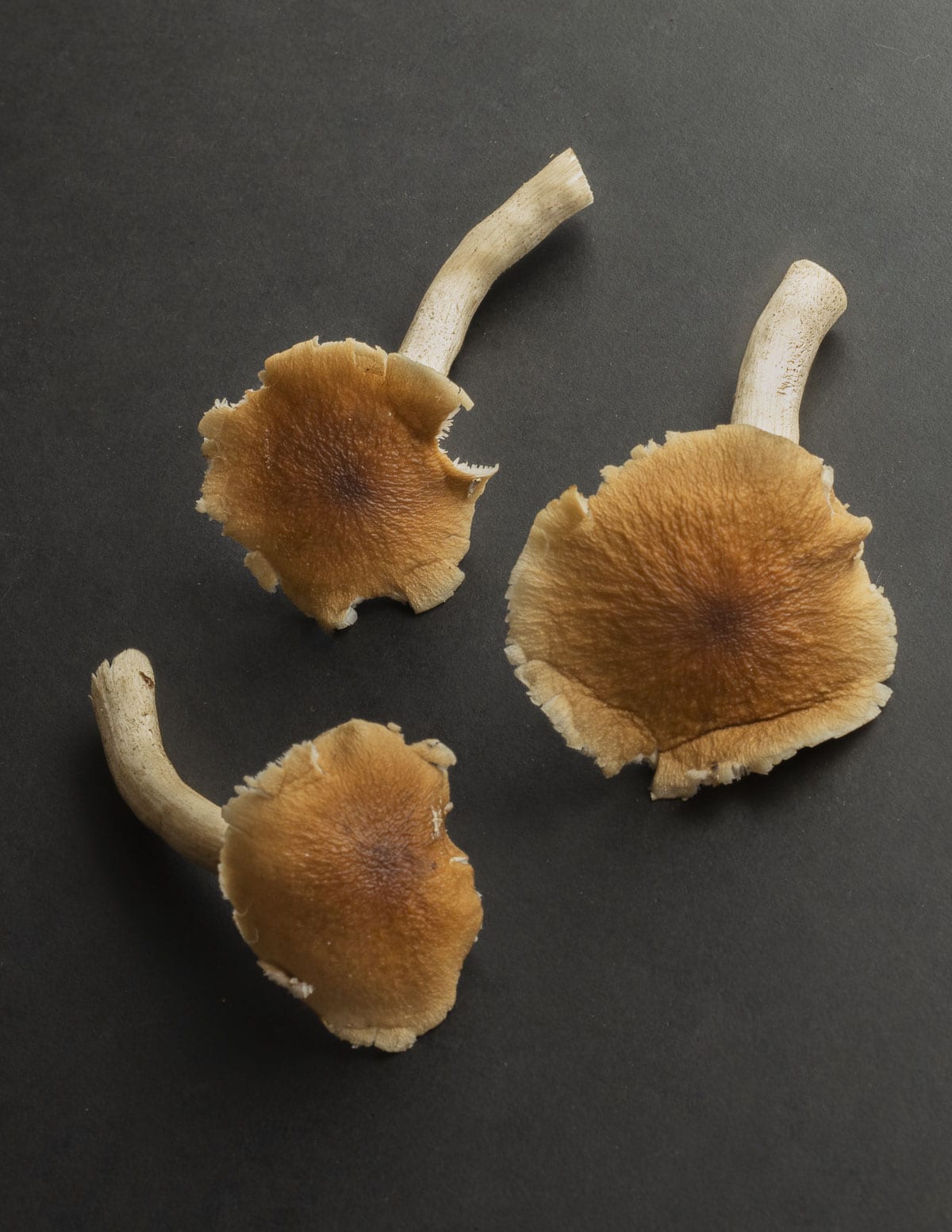
Smaller mushrooms can be cooked whole as a simple side dish or used on an appetizer platter or antipasti. Like most mushrooms they also work well as a garnish for fish, game and red meat.
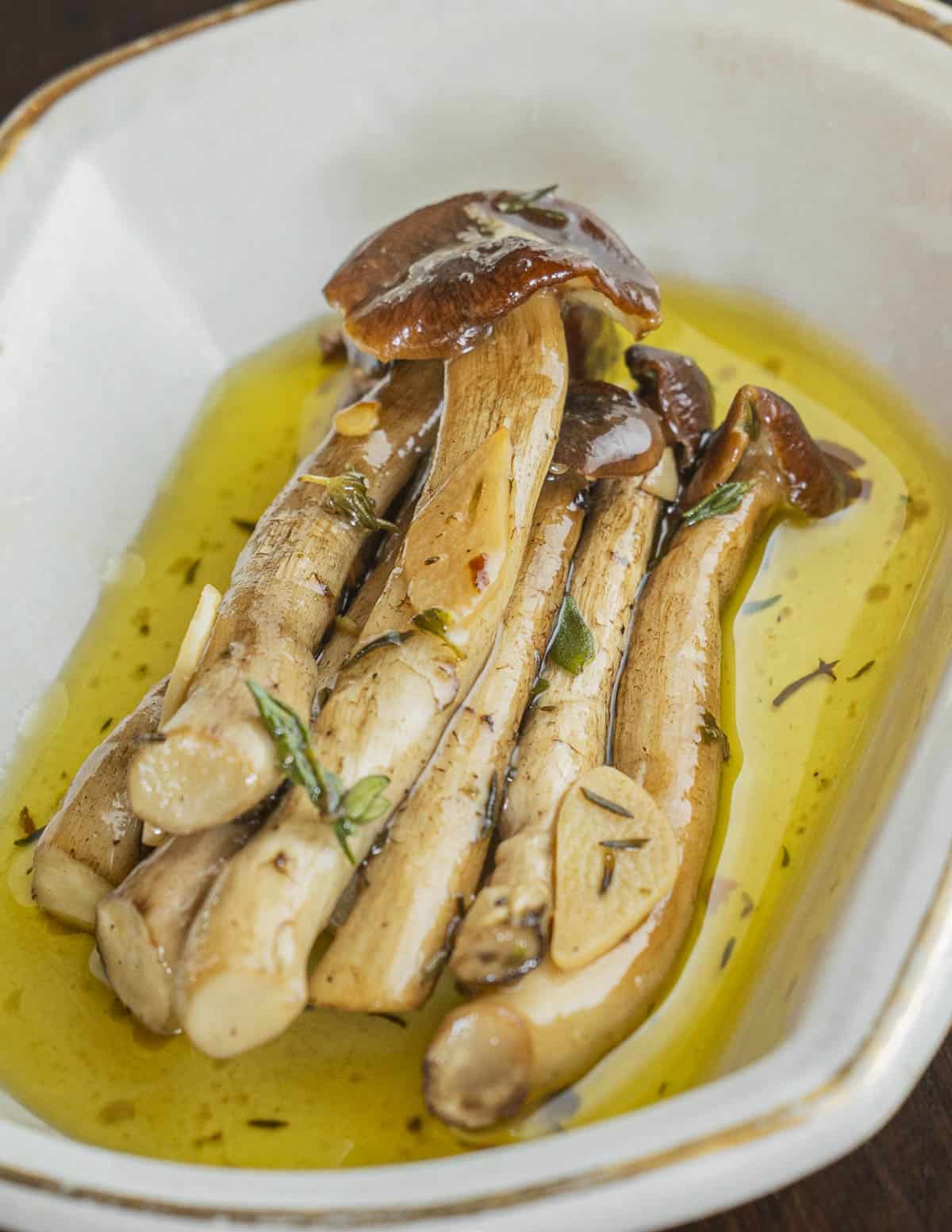
Mushrooms with large, thick stems can be pan roasted whole as the centerpiece of a dish, or cut into pieces and used in pasta dishes, mushroom sauces and soups.
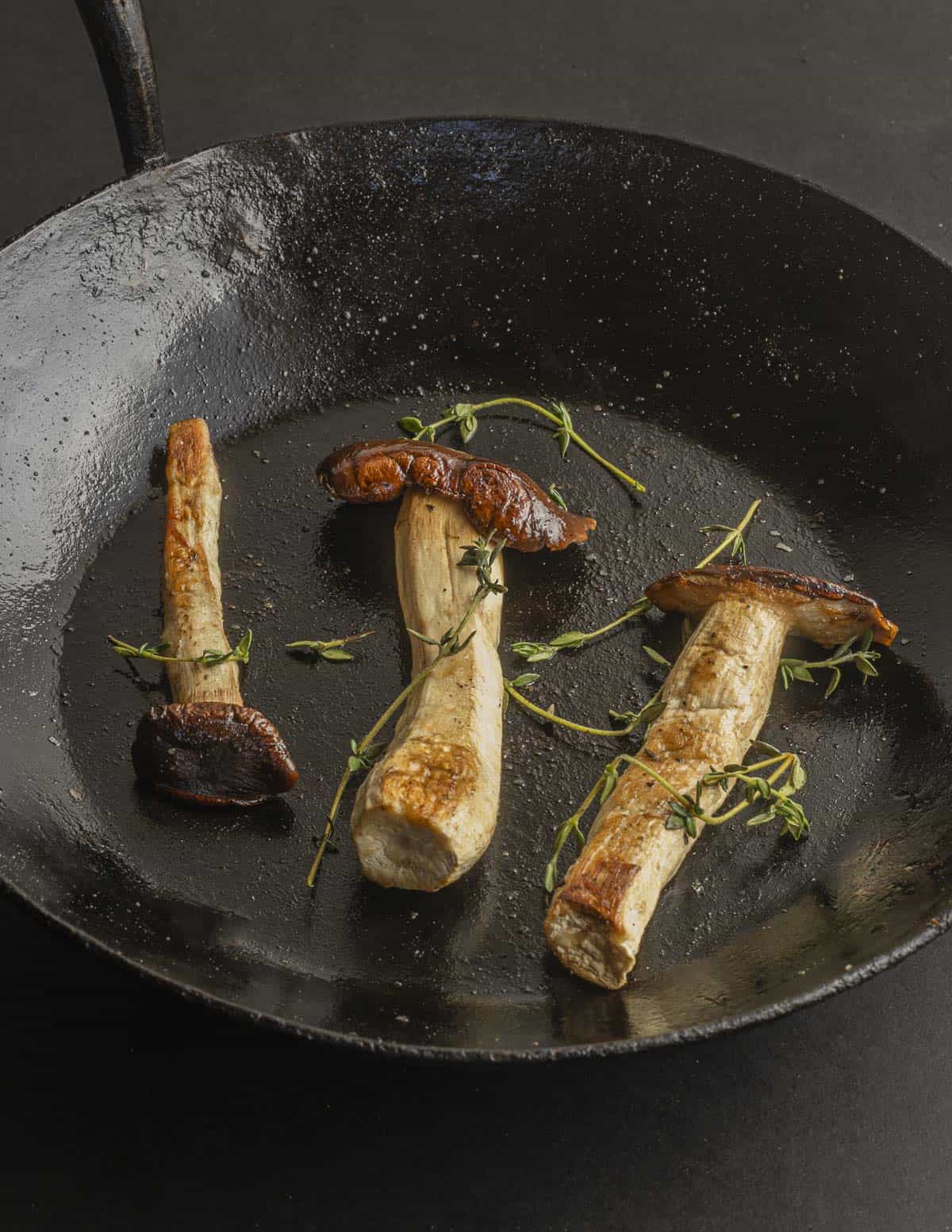
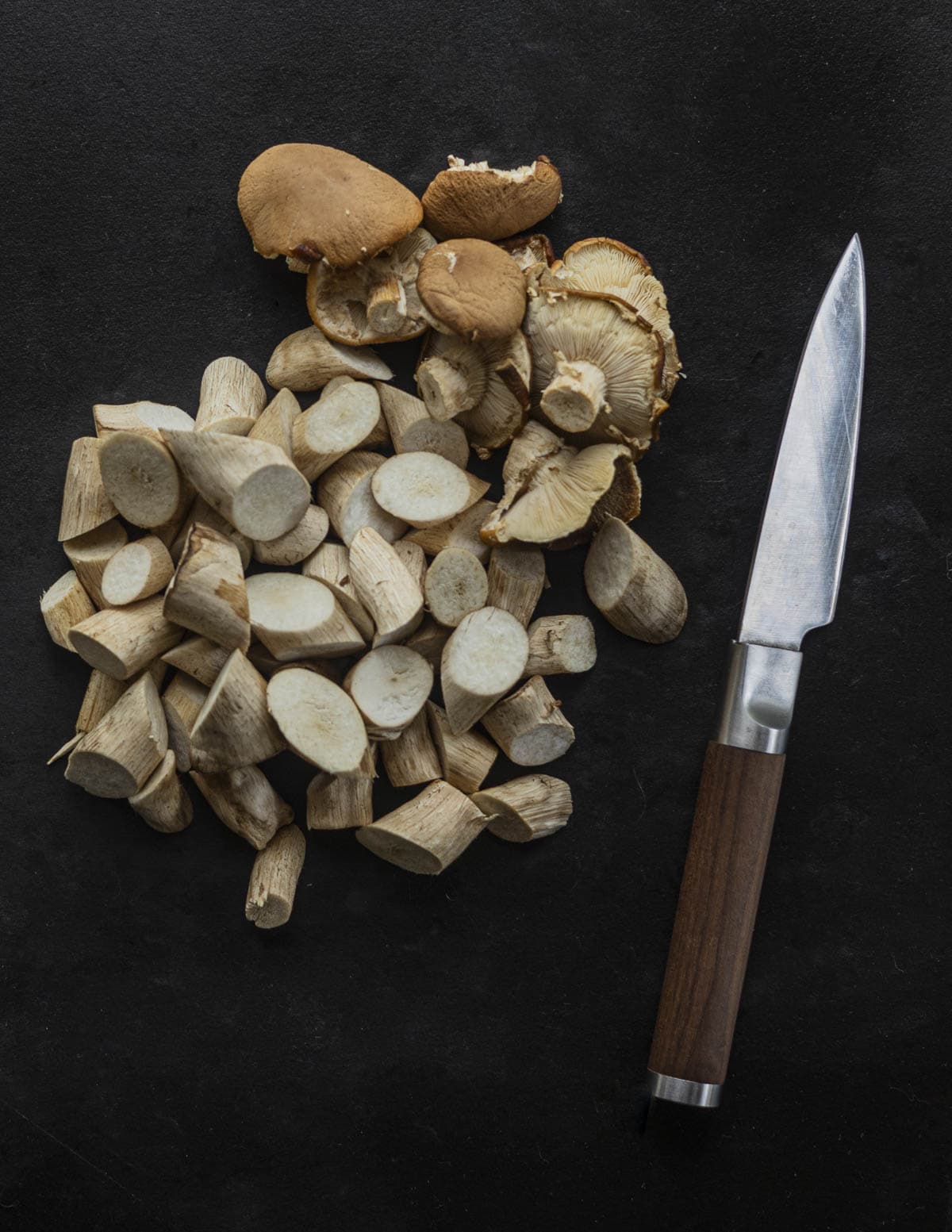
The long, chewy stems also take well to the Japanese technique of peeling the mushrooms apart like string cheese for adding to soup and noodle bowls like ramen.
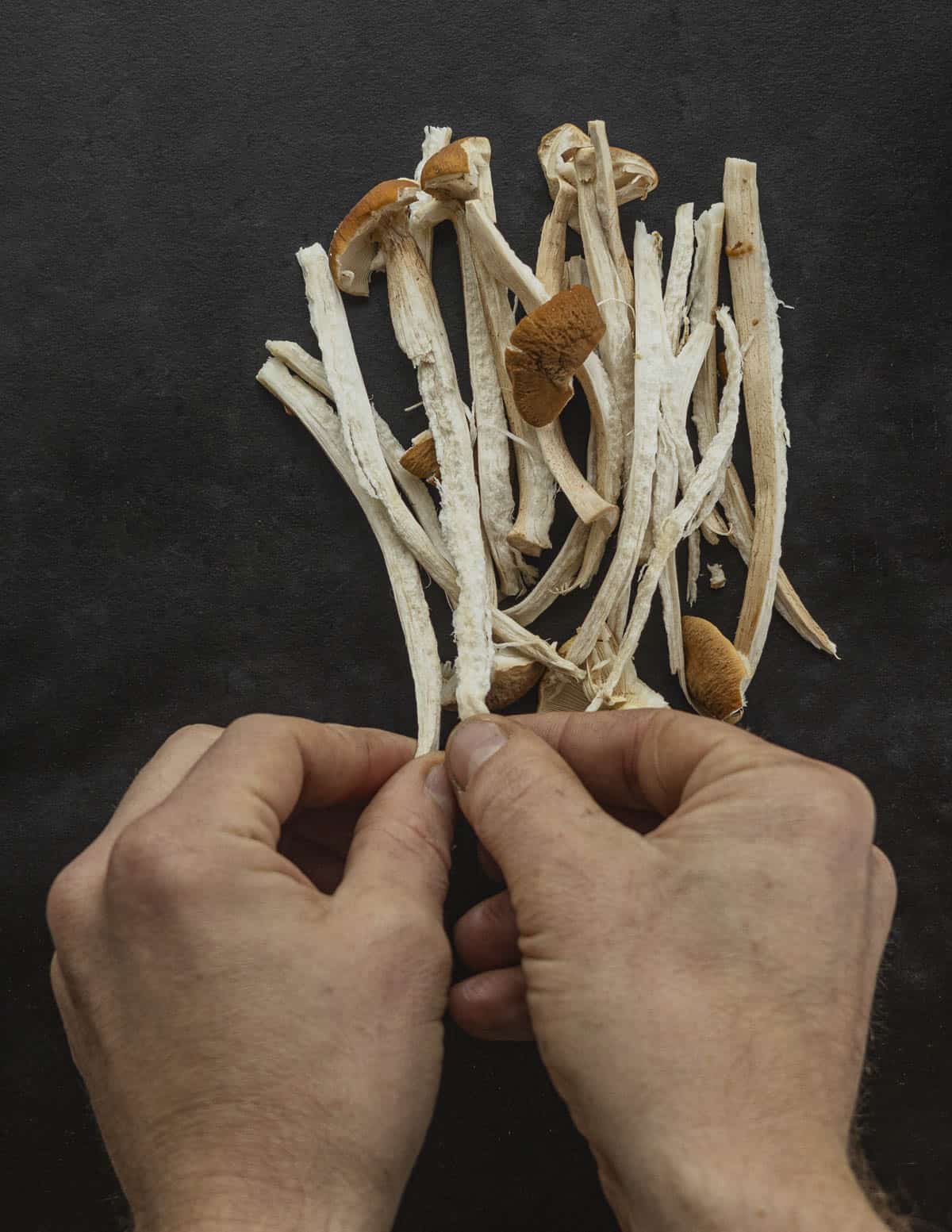
The long stems can be good but will be a little chewy for some. Just like honey mushrooms, if they're thick enough the stems can be peeled which will make them more tender.
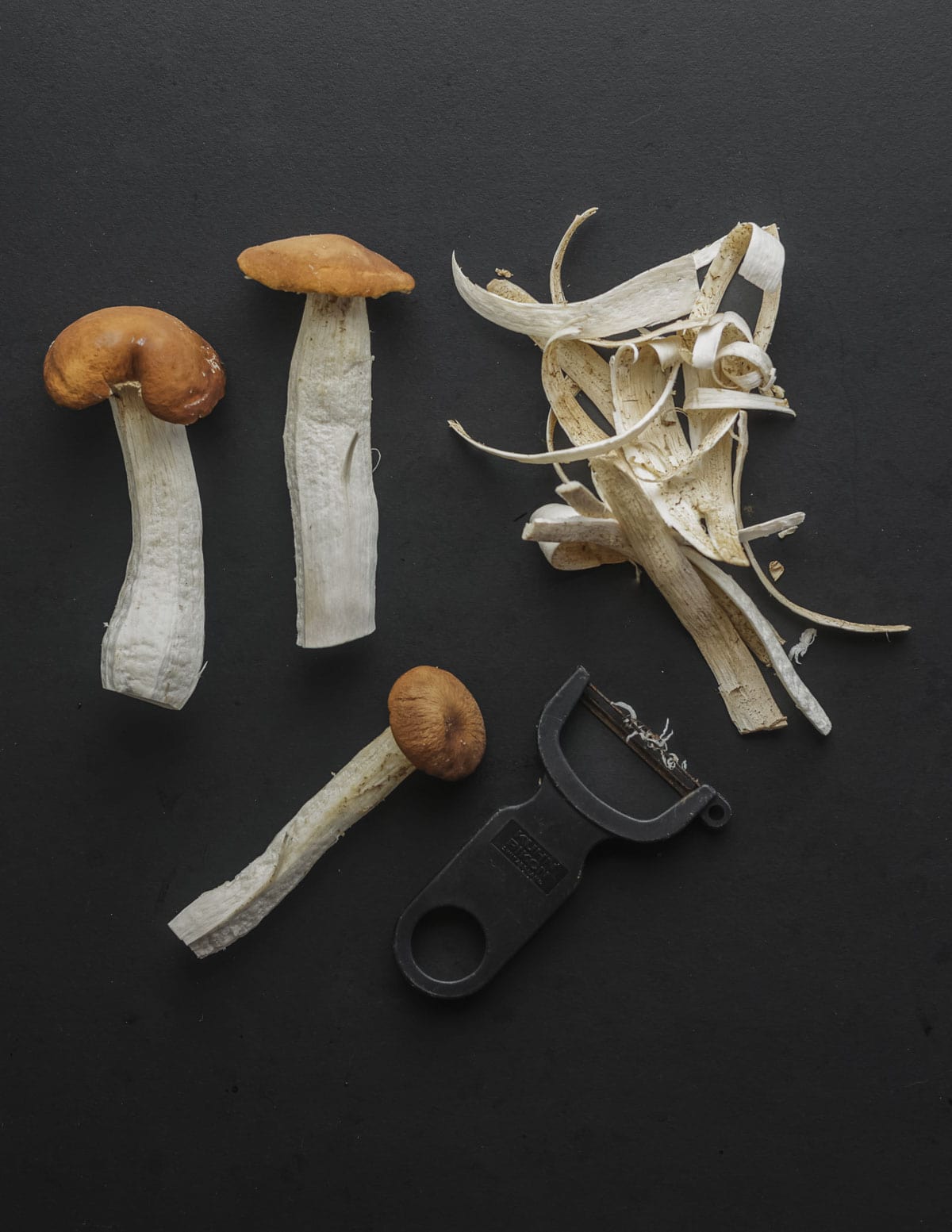
If you can't find any, the best substitute for pioppinos are probably the chestnut mushroom which is easier to cultivate, although still tricky to find. The cheap, widely accessible Beech mushrooms come in at a close second.
A Few Pioppino Mushroom Recipes
Like most mushrooms, if it's your first time cooking them it's good to treat them simply in a way that appreciates their form. The long stems can be slightly awkward, but make for a great appetizer or side dish.
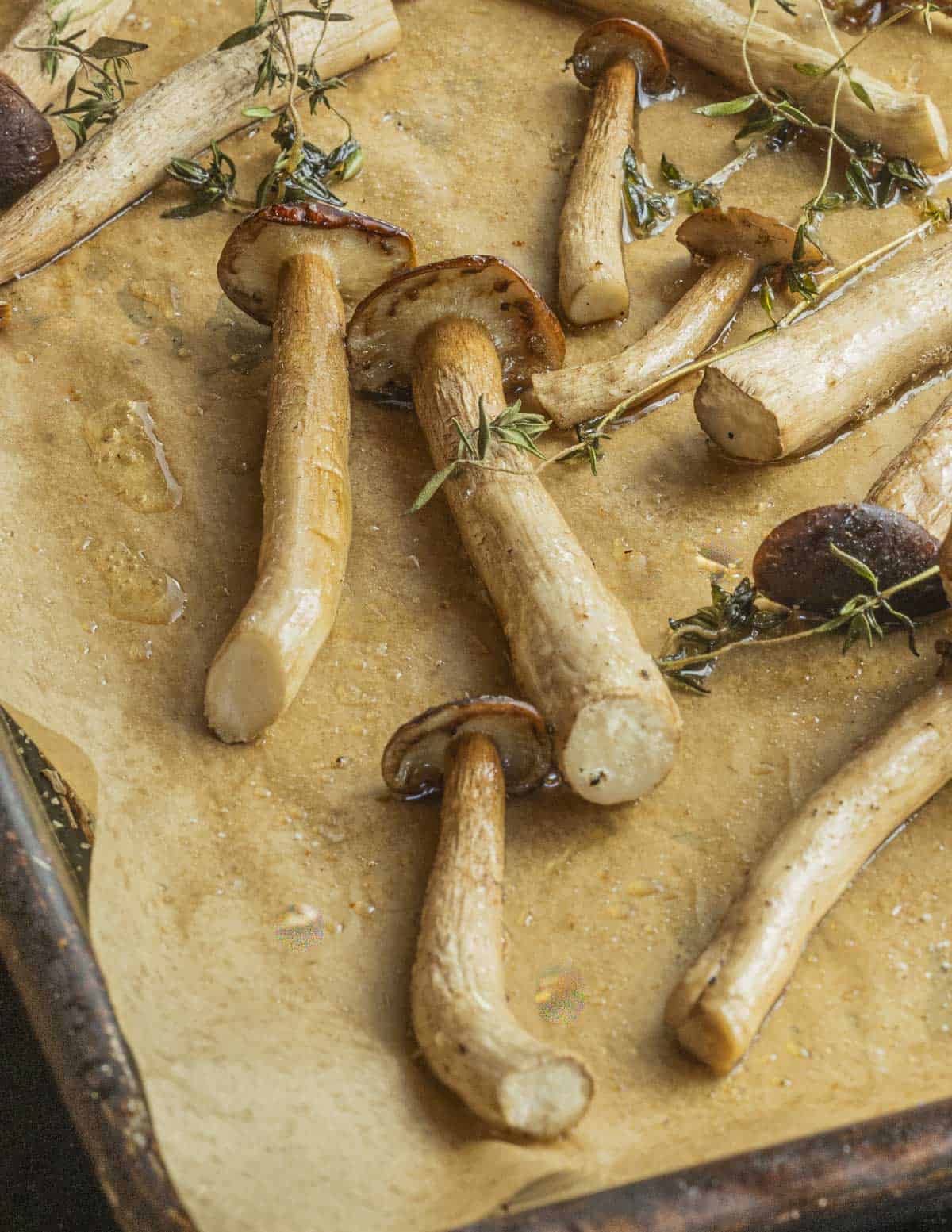
Above: roasted pioppino mushrooms with herbs are simple and easy. Use my recipe for roasted hen of the woods to make these. There's also a great marinated recipe in my post on chestnut mushrooms (Pholiota adiposa).
Pan Roasted
The simplest way to cook them is to preheat an oven to 400 F and get a pan hot. Add the mushrooms and a little oil, and put in the oven for 4-5 minutes until the mushrooms are wilted. Toss with a few sliced herbs, season with salt and pepper, and eat.
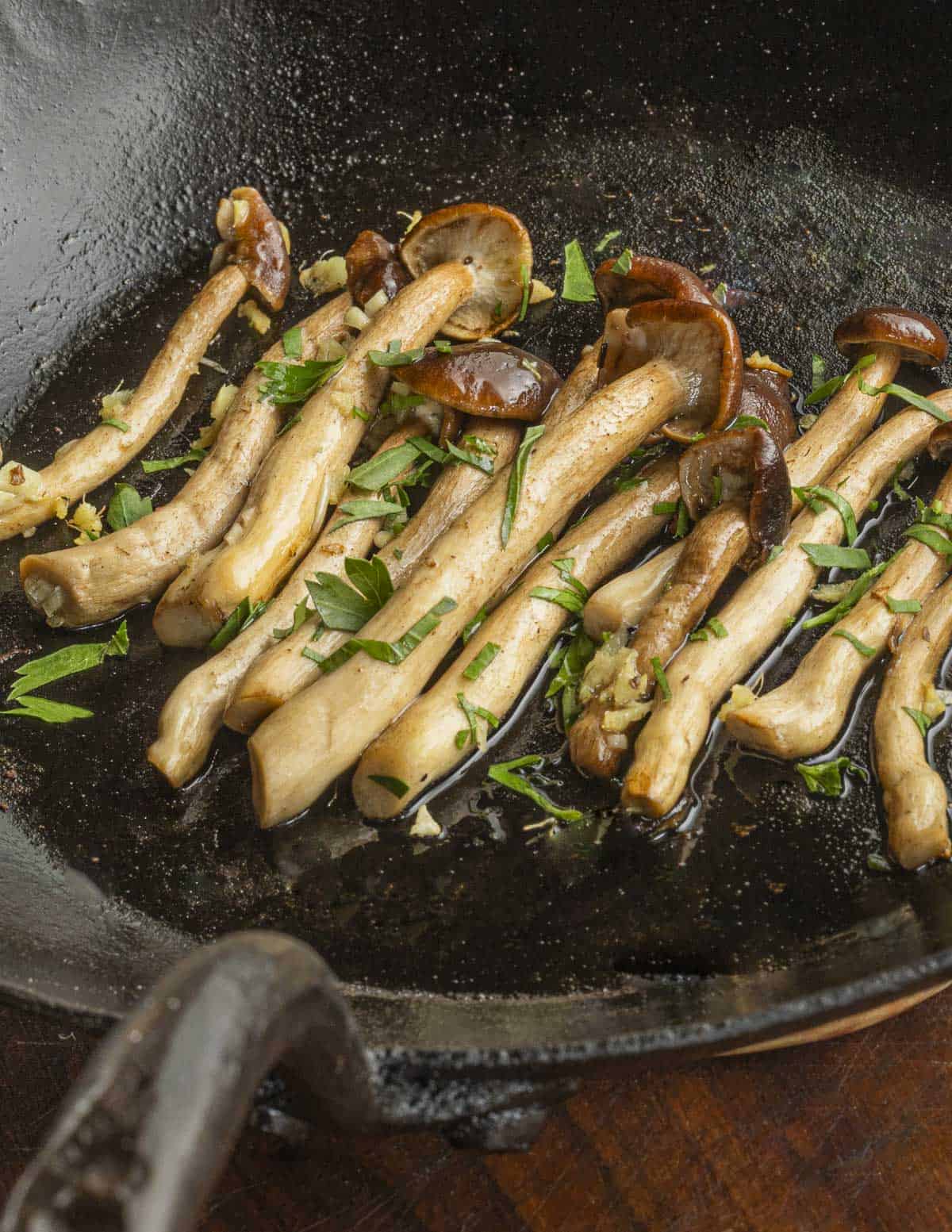
After the mushrooms are cooked they can also be marinated or served as-is. The long stems make an attractive addition to antipasti platters, cheese and charcuterie.
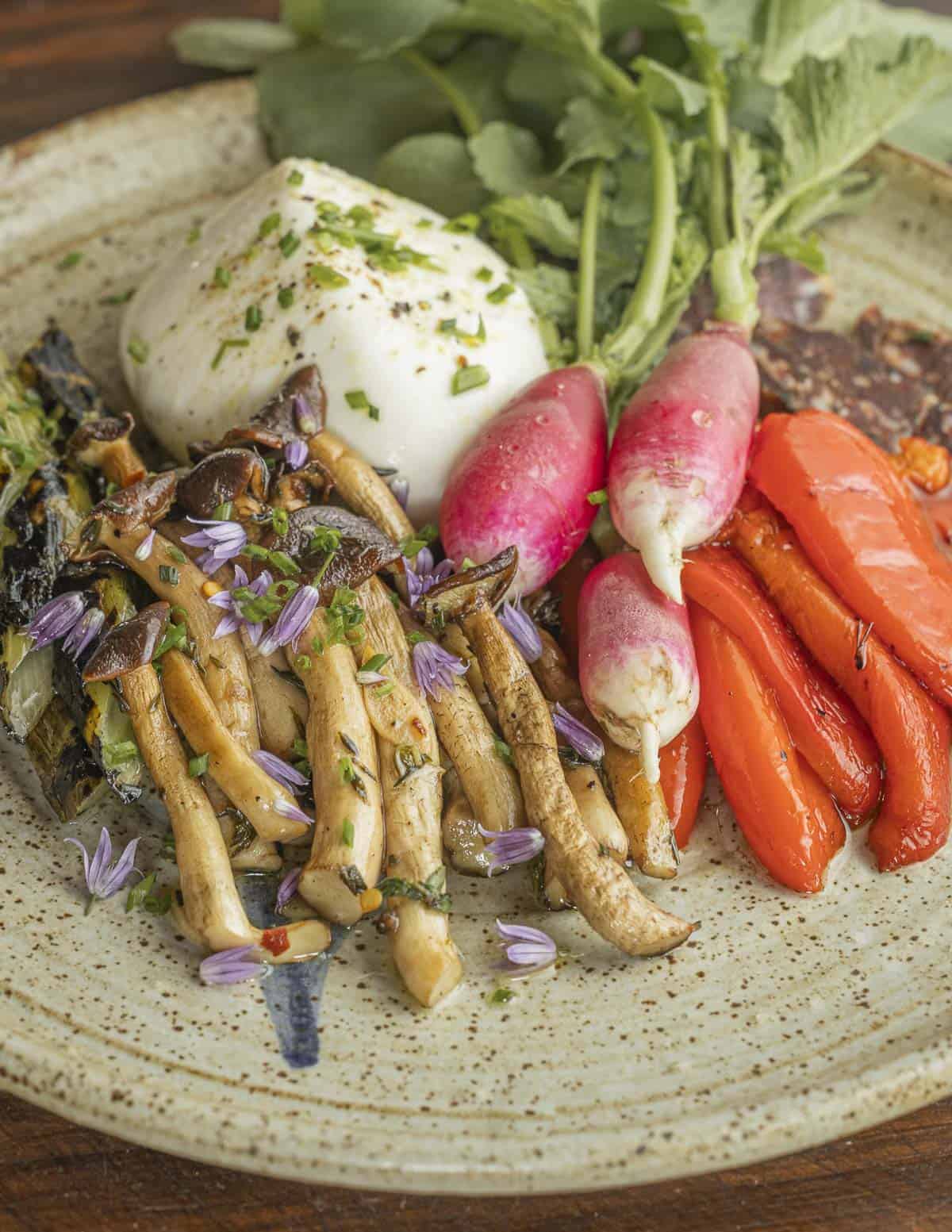
Grilled
Grilling, especially over wood for a smoky flavor is a great way to cook large amounts of mushrooms outside. You'll want a perforated grilling basket for this. After they're cooked they can be served, or even better, marinated to balance the smoky flavor of the wood.
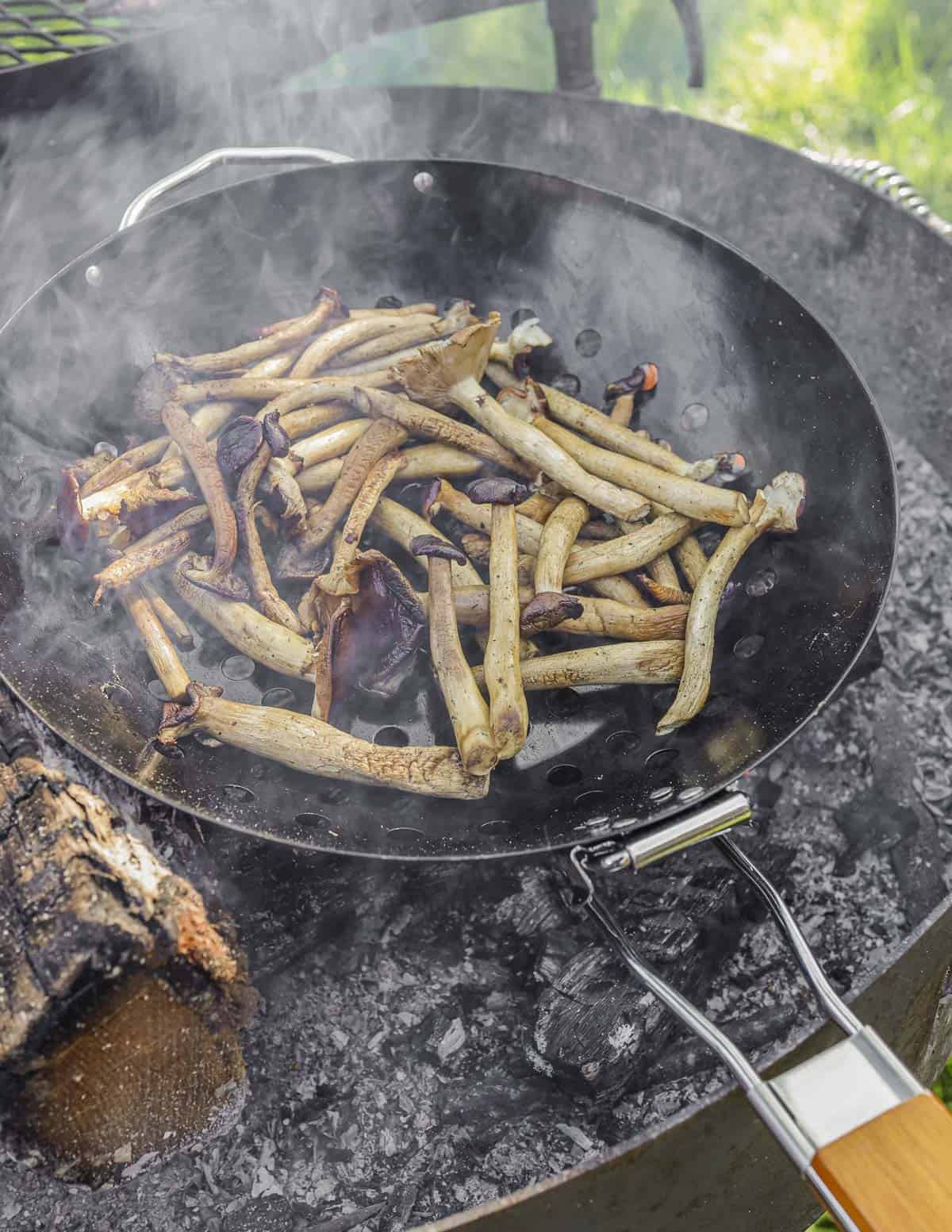
Like most mushrooms they're also work well in your favorite soup, especially brothy soups like ramen. Below is one I made using my recipe for pheasant back mushroom ramen with cow parsnip shoots, fiddleheads and herbs. The mushrooms are shredded as the Japanese do with matsutake but they could also be cut into pieces.
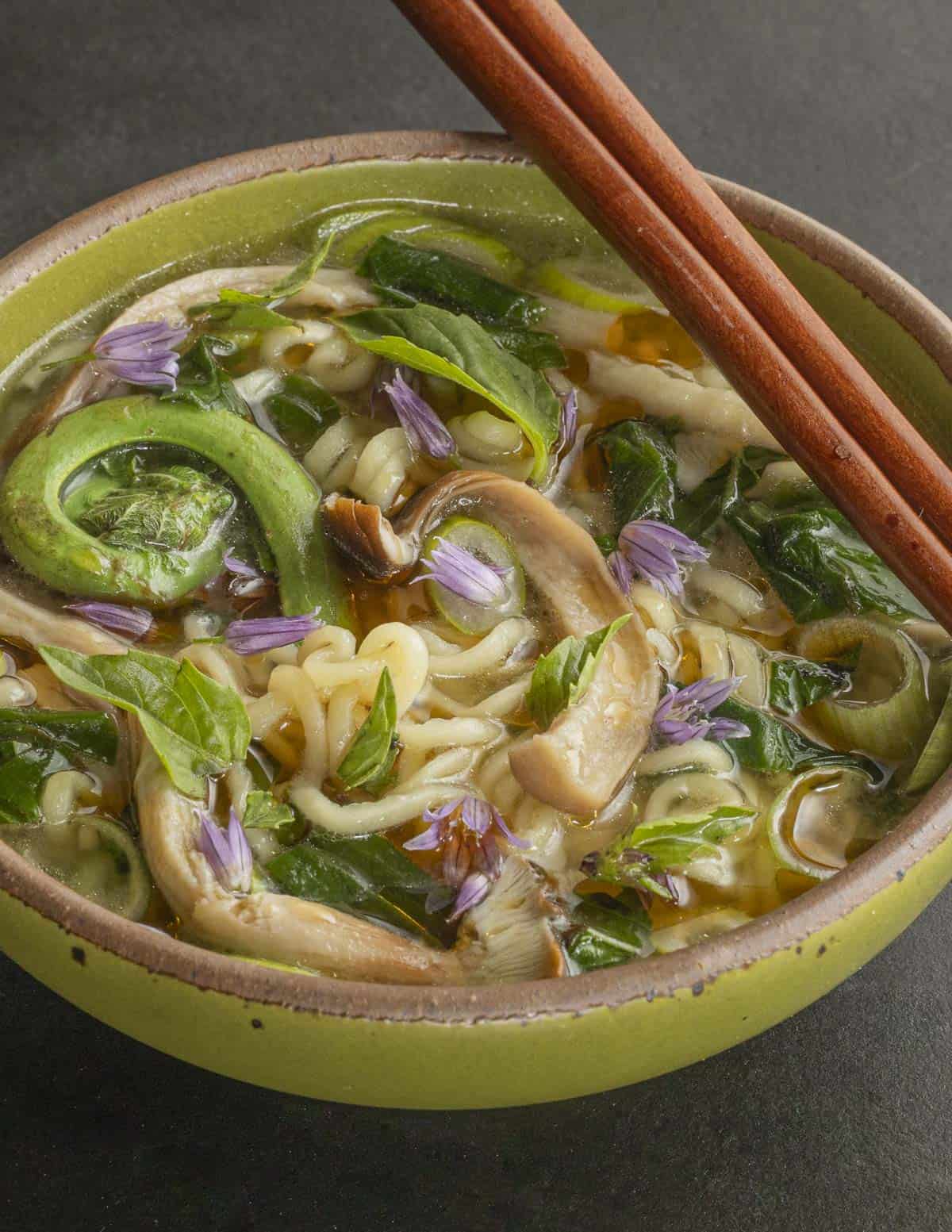
One of my favorite recipes was a simple mushroom sauce with fresh pasta. Take two thinly sliced cloves of garlic and cook in olive oil until golden, add four ounces of sliced mushrooms, six ounces chopped peeled tomatoes and simmer with a splash of pasta water. Add 4 oz cooked pappardelle noodles, crushed red pepper flakes, mint, basil or Tuscan nepitella and parmesan or pecorino cheese.
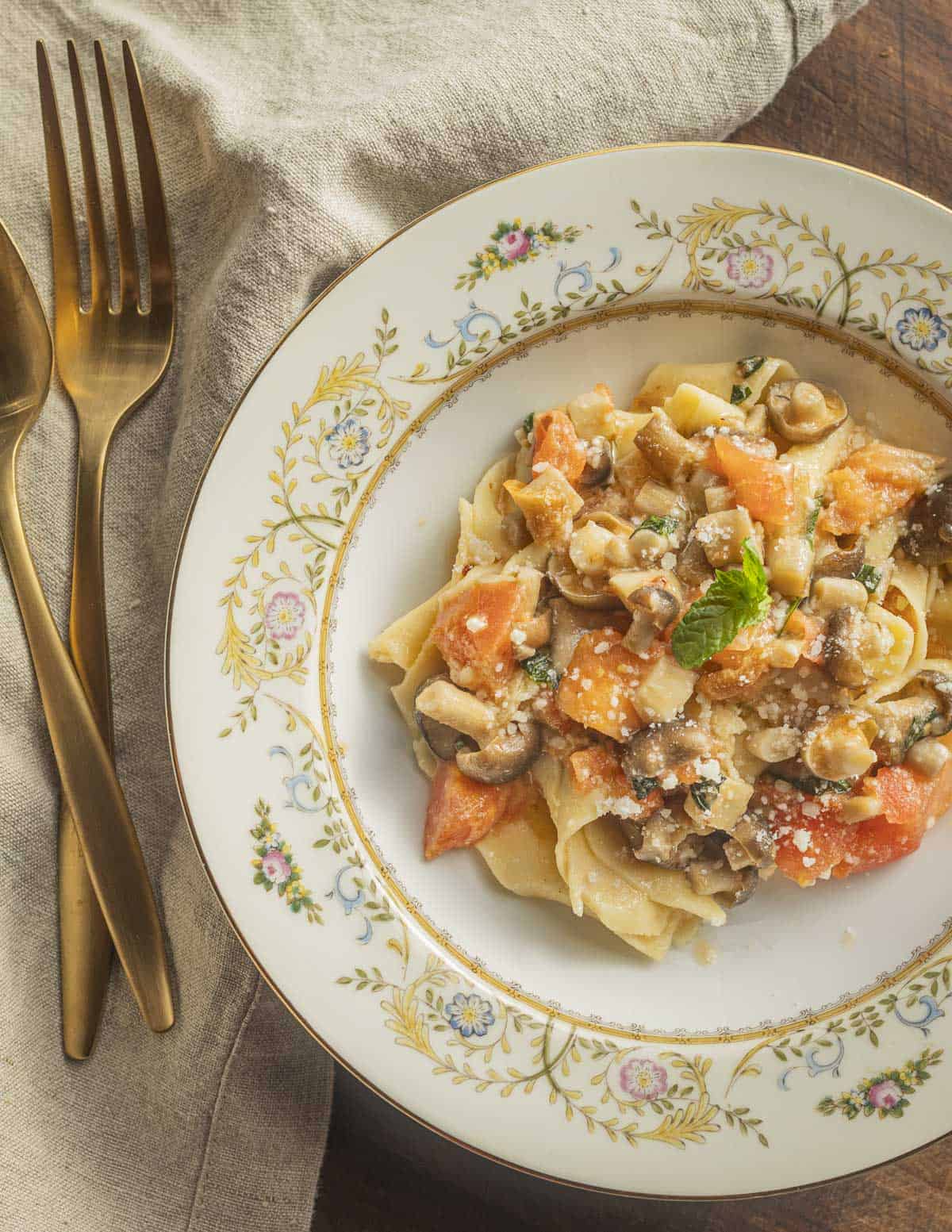

Kelly Chadwick
Have you ever asked your friends at R and R about Shaggy Parasols? I am baffled why no one cultivates them. Over here they are weed like in gardens and urban landscapes. Would love to know if you ever hear the answer to this mystery.
On Agrocybe praecox, I teach it to folks for collection as it's abundant here on wood chips, and with the cracked cap is not too difficult to identify. Just bitter if not young.
Best,
Kelly
Alan Bergo
Kelly are you talking about C. rhacodes? If so I didn't know it was cultivated. If they are that would be so cool.
EC
Yum, all the way through. I have been looking for the perfect grill basket and the grill basket you used above, is perfect for my needs. Would you be kind enough to identify it and provide a source for purchase?
Alan Bergo
Hi EC. Mine was a random one from a thrift store, but the brand is Kenmore-I can't find any for sale online. If I was going to buy a decent one, to make sure it isn't made with PFAS I'd prob get cast iron. Stainless steel works just fine too, it's just going to discolor eventually. I like the folding handle on mine, but many with folding handles are flimsy and very cheap. I'd try the simple Lodge cast iron for a cast iron model CAST IRON LODGE GRILL BASKET . For a stainless model I'd try one like this.
EC
Of course you got yours at a thrift store (well done you, but as you said, random), and of course you took your valuable time to look online (your kindness). Love that you are concerned about PFAS too (are you familiar with the website mamavation.com)? Perhaps others here would be interested too. Identifies products with and without PFAS and other chemicals. I will check out the two suggestions you gave me. The folding handle is one of the things I love about yours, it also looks like carbon steel with stainless handles. All much appreciated!!!
Alan Bergo
My pleasure.
Laura Nevins
Thank you for another informative and exciting plant introduction! I sincerely appreciate the videos and step by step photos/instructions that inspire complete confidence in trying new techniques and recipes.
Alan Bergo
Thanks Laura. I shot it last spring and only now got to editing it, lots of time and planning goes into these.